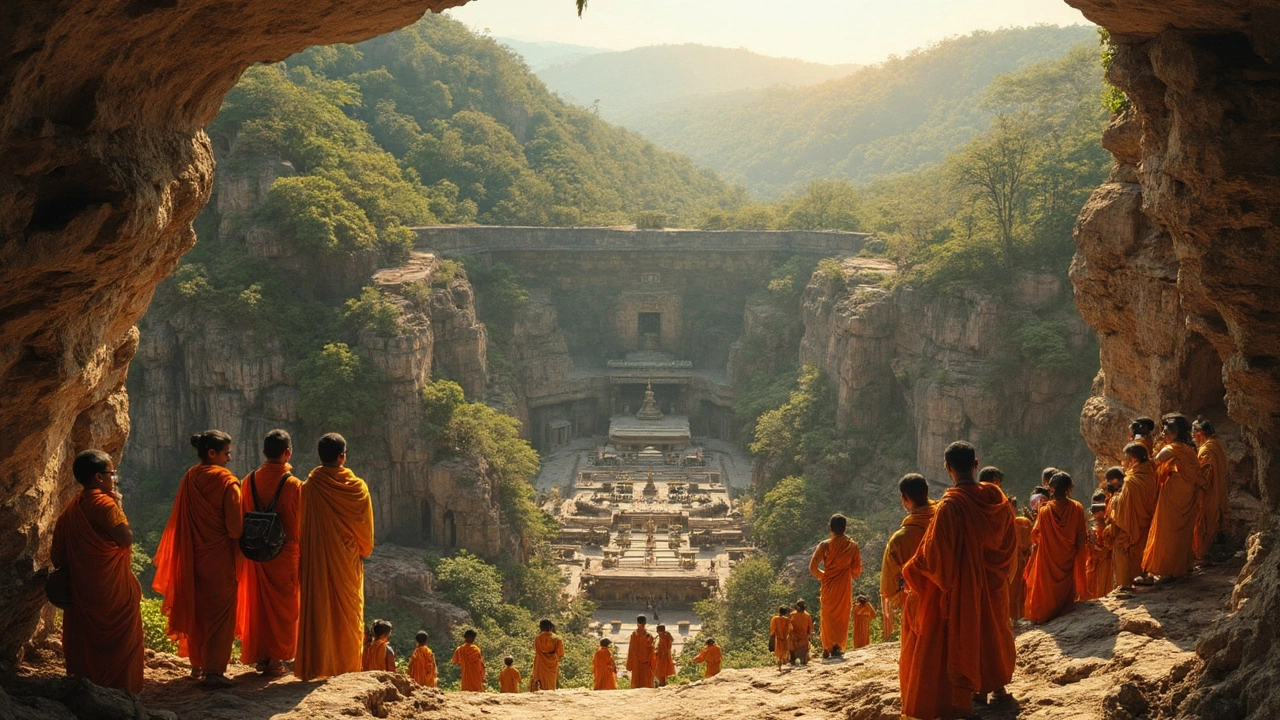
First Indian Art Masterpiece: Discover the Ajanta Caves’ Timeless Brilliance
Uncover how the Ajanta Caves became the first masterpiece of Indian art, why they still captivate the world, and what makes their history and detail unforgettable.
When you think of ancient Indian paintings, visual records from India’s earliest civilizations that blend art, religion, and daily life. Also known as Indian mural traditions, these works aren’t just decorations—they’re spiritual maps carved in pigment, telling stories of gods, kings, and common people long before books existed. Unlike Western art that often focused on realism, ancient Indian paintings were built on symbolism. The blue skin of Krishna, the swirling halos around deities, the gold leaf on temple walls—every choice carried meaning. These weren’t random colors or patterns. They were coded language, meant to be read by the faithful.
One of the most famous examples is the Ajanta murals, a series of 30 rock-cut cave paintings in Maharashtra dating back over 2,000 years. These aren’t just old pictures—they’re the oldest surviving narrative art in India, showing scenes from the Jataka tales, royal processions, and even women applying makeup. The artists used natural pigments: red from ochre, blue from lapis lazuli, green from malachite. They painted on wet plaster, which helped the colors last. And they didn’t sign their names. Their work was devotion, not fame. Meanwhile, in the south, temple wall paintings, especially in Tamil Nadu and Karnataka, depicted Hindu epics like the Ramayana and Mahabharata with intricate detail. These weren’t meant for galleries. They were visual sermons for people who couldn’t read, guiding them through dharma, karma, and devotion. Even today, you can see echoes of these styles in modern Tamil folk art like Kalamkari and Thanjavur paintings, where gold foil and bold outlines still carry the same spiritual weight.
What makes these paintings so powerful isn’t just their age—it’s how deeply they tied art to belief. The same artists who painted gods also painted farmers harvesting rice, dancers in festivals, and animals in the wild. They didn’t separate sacred from ordinary. Everything was part of the same universe. That’s why you’ll find scenes of music and dance next to scenes of meditation. That’s why the same blue used for Shiva’s skin also appears in the sky above a village procession. These paintings didn’t just show stories—they made them real.
If you’ve ever wondered why Indian gods are painted blue, or how a 1,500-year-old mural still speaks to people today, you’re not alone. The collection below dives into exactly that: the hidden meanings behind colors, the forgotten artists, the regional differences between northern and southern styles, and how these ancient works still shape Indian art today. You’ll find connections to Diwali’s symbolism, the roots of Carnatic music in temple rituals, and even how Tamil folklore preserves painting traditions lost elsewhere. This isn’t just history. It’s living culture, still breathing in every brushstroke.

Uncover how the Ajanta Caves became the first masterpiece of Indian art, why they still captivate the world, and what makes their history and detail unforgettable.